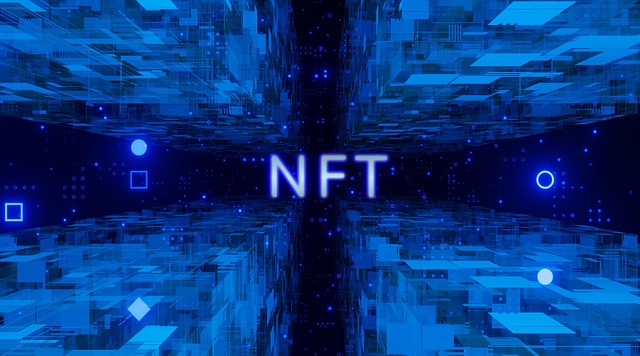What is DCA in Crypto Futures Trading in 2025
Author: Jameson Richman Expert
Published On: 2025-08-19
Prepared by Jameson Richman and our team of experts with over a decade of experience in cryptocurrency and digital asset analysis. Learn more about us.
In the rapidly evolving landscape of cryptocurrency trading, understanding and effectively utilizing strategies like Dollar-Cost Averaging (DCA) in crypto futures trading is becoming crucial for traders aiming to navigate volatility and maximize long-term gains. As markets become more unpredictable due to macroeconomic factors, regulatory shifts, and technological developments, systematic investment approaches like DCA provide a disciplined method to mitigate risk and avoid impulsive trading decisions. Over years of hands-on experience and comprehensive analysis, I’ve observed that integrating DCA into futures trading can significantly enhance profitability, especially when dealing with volatile assets such as Bitcoin, Ethereum, and emerging altcoins. This article delves into the deep mechanics of DCA within the context of crypto futures trading in 2025, offering actionable insights for both novices and seasoned traders.

Understanding DCA in Crypto Futures Trading
Dollar-Cost Averaging (DCA) is an investment technique where an investor commits to purchasing a fixed dollar amount of an asset at regular, predetermined intervals—such as weekly, bi-weekly, or monthly—irrespective of its current price. Historically, DCA has been favored by long-term investors for its ability to reduce the impact of short-term volatility and to avoid the pitfalls of market timing. Fundamentally, DCA minimizes emotional biases like FOMO (fear of missing out) and panic selling by spreading out investments over multiple points in time, leading to a more favorable average entry price across fluctuating markets.
Applying DCA within crypto futures trading introduces additional complexities and opportunities. Unlike spot markets, futures involve leverage, margin management, and potential for magnified gains or losses. When executing DCA in futures, traders often allocate fixed amounts at set intervals to open new leveraged positions or gradually add to existing ones. This systematic approach allows for gradual exposure buildup, which is especially vital given the extreme volatility characteristic of cryptocurrencies. Effective leverage management, setting appropriate stop-loss orders, and understanding market momentum are essential components for successful DCA deployment in derivatives. Moreover, automation tools—such as trading bots and platform APIs—are invaluable for ensuring disciplined adherence to DCA schedules, especially during turbulent market phases where emotional reactions can impair judgment.
Advantages of Using DCA in Crypto Futures in 2025
The benefits of DCA in crypto futures trading are particularly salient in 2025, a year marked by heightened volatility driven by macroeconomic uncertainties, regulatory changes, and rapid technological shifts within the blockchain sphere. One of the primary advantages is the ability to average out entry points, thereby reducing the risk of poor timing and adverse price swings. Crypto assets like Bitcoin, Ethereum, and DeFi tokens often experience rapid and unpredictable price movements, making precise market timing exceedingly challenging. DCA spreads purchase points over time, leading to a lower, more stable average entry price and decreasing emotional stress associated with market swings. This disciplined approach promotes consistent investing—an essential trait for long-term success amid such turbulent conditions.
Furthermore, modern trading platforms and automation tools—like Binance’s recurring buy features, Bybit’s scheduled order functionalities, and Bitget’s API integrations—facilitate the efficient implementation of DCA strategies. Automation ensures consistency, minimizes emotional biases, and maintains a steady investment regimen regardless of short-term volatility or market sentiment. For example, a trader can set weekly futures entries with predefined leverage, stop-loss, and take-profit levels, systematically building positions while managing downside risk effectively. During unpredictable market cycles, automation becomes especially invaluable, preventing impulsive reactions that can derail trading discipline.
Implementing DCA in Crypto Futures Trading: Practical Tips
Effective implementation of DCA in crypto futures trading hinges on strategic planning, unwavering discipline, and comprehensive risk management. Here are some detailed tips to optimize your approach:
- Define Total Capital & Schedule: Clearly determine your total trading capital and set a consistent schedule—be it weekly, bi-weekly, or monthly—for executing trades. Rigid adherence to this schedule fosters discipline and prevents emotional decision-making, especially during volatile times. Incorporate buffer zones to adjust for market conditions or unexpected events.
- Leverage Management: Use leverage conservatively. While leverage amplifies profits, it also magnifies potential losses and risks of liquidation. For retail traders, limiting leverage to levels like 3x or 5x is prudent, especially when following a DCA plan, to navigate unpredictable swings without risking total capital erosion. Regularly monitor liquidation levels and margin requirements to prevent forced exits.
- Automation & Tools: Leverage trading bots and platform-specific features that support scheduled or recurring trades. Binance, MEXC, and Bitget offer APIs and built-in recurring order functionalities. For example, setting up weekly futures purchases via Binance’s API with pre-specified leverage, stop-loss, and take-profit parameters ensures consistent execution and emotional detachment, even during high-volatility periods.
- Risk Controls: Always employ protective measures such as stop-loss, take-profit, and trailing stops. These tools help lock in profits when favorable, limit downside exposure, and adapt dynamically to market movements. Regularly review and adjust your risk parameters based on current market conditions and your evolving trading experience. Incorporate position sizing techniques to limit exposure per trade relative to total capital.
- Market Awareness & Data Analysis: Stay informed about macroeconomic indicators, technological upgrades (like Ethereum’s network upgrades or Bitcoin halving events), and regulatory developments. Utilize analytics platforms like TradingView, CoinGecko, and Glassnode to monitor on-chain metrics, funding rates, and market sentiment that influence your entry and exit points. Incorporate sentiment analysis tools and news aggregators to anticipate potential volatile shifts.

Risks and Challenges of DCA in Crypto Futures
Despite its advantages, DCA in crypto futures presents inherent risks—particularly in a market characterized by extreme volatility. Understanding these challenges is vital for effective risk mitigation:
- Market Trends & Prolonged Trends: During extended bullish periods, DCA might lead to accumulating assets at higher average prices, which could underperform if prices continue rising rapidly. Conversely, in prolonged bear markets, ongoing purchases could result in holding depreciating assets, increasing downside risk. It’s important to adapt DCA schedules based on macro trends and market momentum indicators.
- Leverage Risks & Liquidation: High leverage in futures amplifies both gains and losses. Sudden adverse movements or gaps can trigger margin calls or forced liquidation, regardless of your DCA schedule. Proper leverage management, conservative position sizing, and maintaining adequate margin buffers are crucial to avoid catastrophic losses.
- Funding Fees & Rollover Costs: Futures contracts, especially perpetual swaps, incur funding rates paid periodically based on market sentiment. Persistent negative funding can erode gains, particularly if positions are held long-term. Traders need to incorporate these costs into their profit calculations and DCA planning—considering their impact on net returns over time.
- Market Manipulation & External Shocks: Crypto markets are vulnerable to manipulation, regulatory crackdowns, macroeconomic shocks, and sudden geopolitical events—all of which can cause abrupt price swings that challenge systematic strategies like DCA. Maintaining flexibility and monitoring news feeds are essential for timely responses.
Active management, diversification across assets, and continuous market analysis are essential to mitigate these risks. Employing dynamic adjustments to your DCA schedule and risk parameters, based on evolving market conditions, will help build resilience against unforeseen shocks.
Personal Experience with DCA in Crypto Futures
Drawing from my personal journey as a trader, I’ve found that DCA in futures stabilizes entry points and fosters emotional resilience. Initially, impulsive reactions to quick price swings and noisy market data led to inconsistent decisions. Transitioning to a disciplined DCA approach—automated through trading bots and scheduled entries—brought much-needed structure, reducing stress and improving overall results. For example, setting weekly futures purchases with conservative leverage allowed me to gradually build my positions, smoothing out the impact of volatile swings. Utilizing automation tools like Binance’s API integrations, coupled with risk management features such as trailing stops, enabled me to adapt dynamically to market changes without emotional interference.
Diversifying across multiple cryptocurrencies—including Ethereum and select altcoins—further enhanced my risk management framework. Consistently monitoring funding fees, macroeconomic indicators, and regulatory news helped me refine my approach, ensuring alignment with prevailing market conditions. These experiences reinforce that a systematic, disciplined DCA strategy—supported by automation and prudent risk controls—can vastly improve outcomes in the unpredictable realm of crypto futures.
Final Thoughts and Future Outlook
Looking ahead to 2025, DCA remains a pivotal strategy in crypto futures trading. Its ability to reduce volatility risk, promote disciplined investing, and leverage automation tools makes it particularly relevant amid ongoing macroeconomic uncertainties and technological innovations. When combined with effective leverage management, comprehensive risk controls, and proactive market analysis, DCA equips traders to navigate turbulent markets with increased confidence. Staying informed through resources like TradingView API guides, blockchain upgrade schedules, and funding fee analyses will empower traders to adapt strategies proactively. Remember, no trading approach guarantees profits—consistent learning, disciplined execution, and prudent risk management are your best defenses in the dynamically shifting world of crypto futures in 2025. Initiate your trading journey with small, regular steps, and continuously refine your approach as your experience deepens. Mastering DCA in crypto futures can be transformative—approach it with patience, discipline, and strategic insight to realize its full potential.